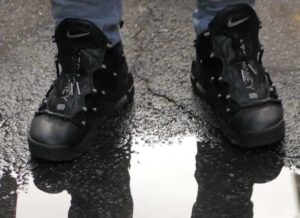Employee injuries can be costly for your business. Moreover, your walk-in cooler or freezer can pose safety hazards for your employees. Therefore, walk-in cooler safety is an important factor to review in your business’s safety procedure checklists. So, taking the necessary precautions to avoid accidents is crucial. The most common injuries that occur inside walk-in coolers and freezers are:

- Slips or falls due to water or ice accumulation
- Slips or falls due to product spills or leakage
- Trip or stumble over boxes
- Strains from lifting or moving heavy items
- Jammed or caught in cooler or freezer door
- Inhalation of lethal fumes
- Exposure to mold
- Hypothermia caused by being in subzero temperature for extended time
1. Keep floors dry
Ice and frost buildup are common and can cause floors to be slippery. Taking immediate action to mop up spills, clear frost and soak up condensation is crucial to keeping floors dry. Also, using a floor squeegee daily to direct any excess moisture into drains can be helpful.

2. Maintenance
Keeping your walk-in cooler safe and in good working order is essential. Routine inspection can alleviate the risk of unforeseen repairs and someone getting trapped inside the cooler. Be sure to check all doors and latches for proper functioning. Also, inspect fans and vents for dust and inspect drains for any clogs. Importantly, you should have your walk-in cooler and freezer inspected routinely by a professional.
3. Stay Warm
Supply jackets for employees who enter or stock items inside the walk-in cooler or freezer. In addition, use gloves, hats and coats for extended time in the cooler. Make sure your employees always inform someone before spending long periods of time in the cooler.
4. Organization
Inventory should be organized in a manner that will not cause employees to trip or fall. In addition, you should keep walkways clear and provide a stepladder for those hard-to-reach items. Do not allow employees to use make-shift ladders or milk crates to reach top shelf items. Also, remind employees to ask for help for items that are difficult to reach. Last but not least, ensure heavy items are waist-high or below.
5. Emergency Preparation
A routine check of all emergency devices should be standard. Verify interior panic-release hardware is operational. In addition, you should keep a fireman’s axe inside in case of door malfunction.
Discuss walk-in cooler safety with your employees on a routine basis. This can help avoid injuries and keep your team working efficiently.



